#python courses and tutorials
Explore tagged Tumblr posts
Text

#python course and certification online#best python classes in nagpur#best python training institute in nagpur#python courses and tutorials
0 notes
Text
Small Basic meets Python - #30 Sorting ...
youtube
Post #244: YouTube, Socratica, Python Tutorial, #30 Sorting in Python, 2025.
#coding#programming#programmieren#education#python tutorial#python coding#python course#python for ever#socratica#youtube#learn to code
4 notes
·
View notes
Text
Udemy, Die US-amerikanische Lernplattform im Internet ...
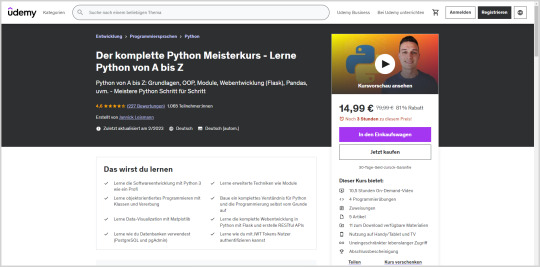
Post: #127: Udemy, Jannick Leismann, der komplette Python Meisterkurs, Lerne Python von A bis Z, 2024.
#programming#coding#i love coding#education#i love programming#coding is fun#learning#i love python#programming language#coding for kids#udemy#python tutorial#python course
5 notes
·
View notes
Text

TOP 10 courses that have generally been in high demand in 2024-
Data Science and Machine Learning: Skills in data analysis, machine learning, and artificial intelligence are highly sought after in various industries.
Cybersecurity: With the increasing frequency of cyber threats, cybersecurity skills are crucial to protect sensitive information.
Cloud Computing: As businesses transition to cloud-based solutions, professionals with expertise in cloud computing, like AWS or Azure, are in high demand.
Digital Marketing: In the age of online businesses, digital marketing skills, including SEO, social media marketing, and content marketing, are highly valued.
Programming and Software Development: Proficiency in programming languages and software development skills continue to be in high demand across industries.
Healthcare and Nursing: Courses related to healthcare and nursing, especially those addressing specific needs like telemedicine, have seen increased demand.
Project Management: Project management skills are crucial in various sectors, and certifications like PMP (Project Management Professional) are highly valued.
Artificial Intelligence (AI) and Robotics: AI and robotics courses are sought after as businesses explore automation and intelligent technologies.
Blockchain Technology: With applications beyond cryptocurrencies, blockchain technology courses are gaining popularity in various sectors, including finance and supply chain.
Environmental Science and Sustainability: Courses focusing on environmental sustainability and green technologies are increasingly relevant in addressing global challenges.
Join Now
learn more -
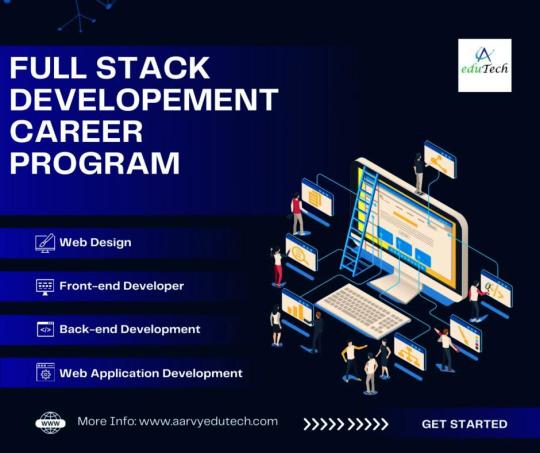
#artificial intelligence#html#coding#machine learning#python#programming#indiedev#rpg maker#devlog#linux#digital marketing#top 10 high demand course#Data Science courses#Machine Learning training#Cybersecurity certifications#Cloud Computing courses#Digital Marketing classes#Programming languages tutorials#Software Development courses#Healthcare and Nursing programs#Project Management certification#Artificial Intelligence courses#Robotics training#Blockchain Technology classes#Environmental Science education#Sustainability courses
2 notes
·
View notes
Text
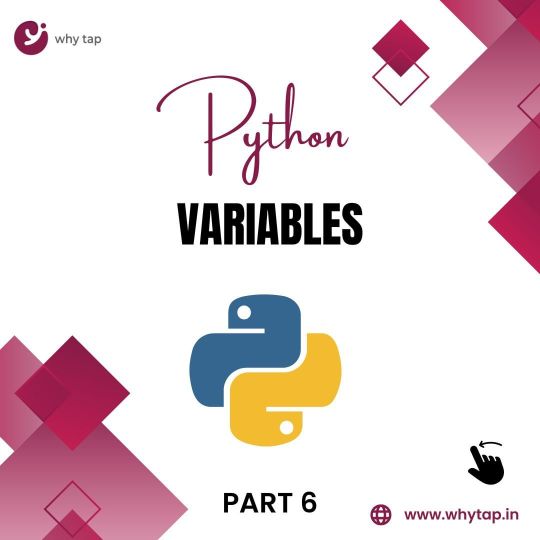
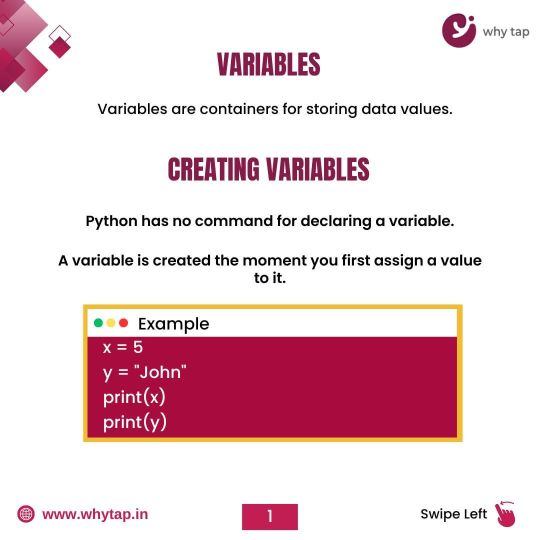
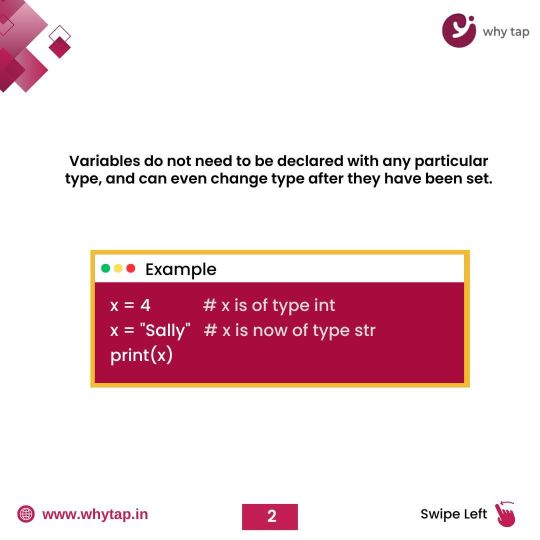
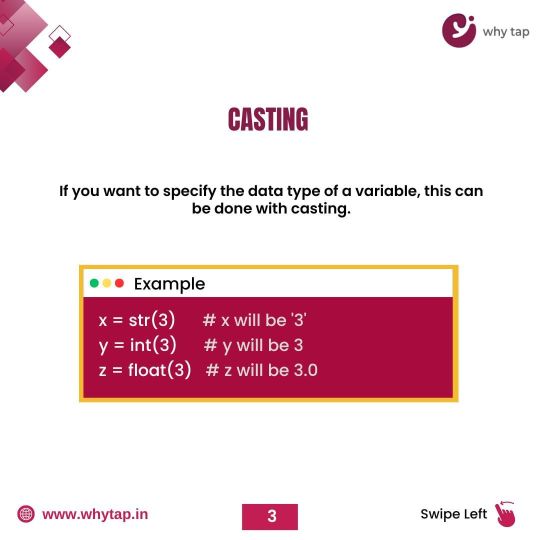
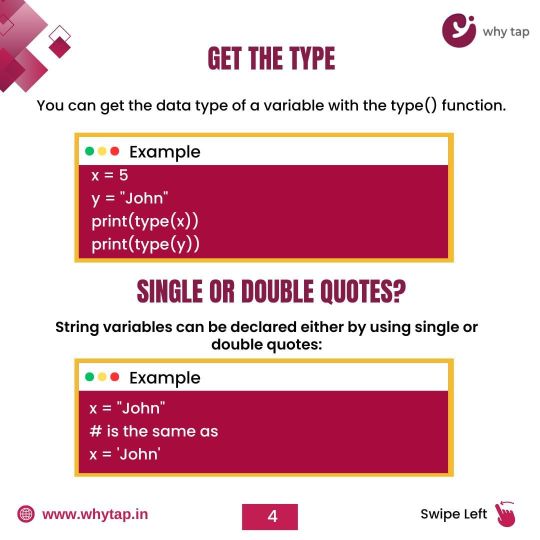
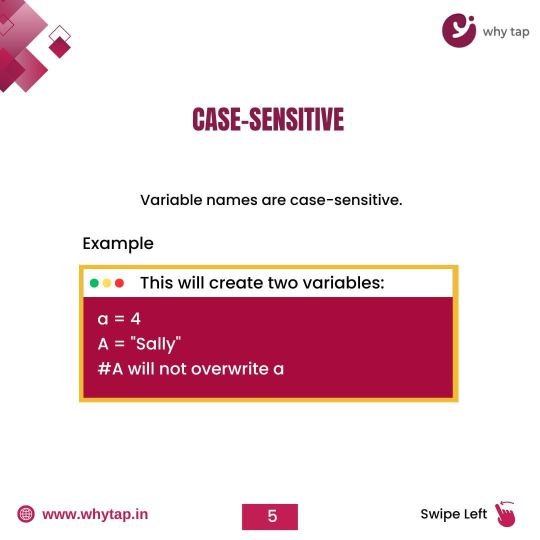
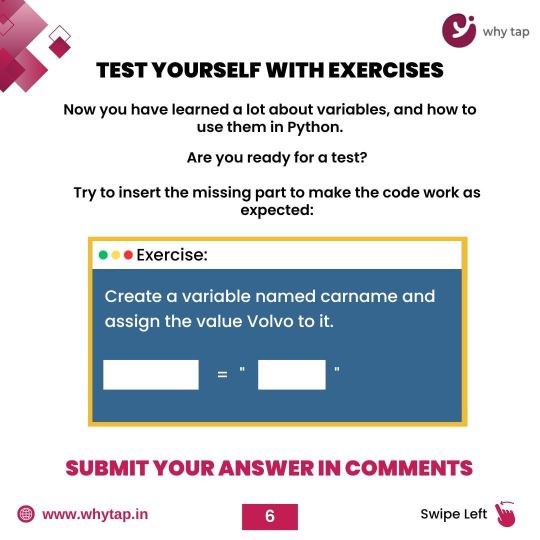
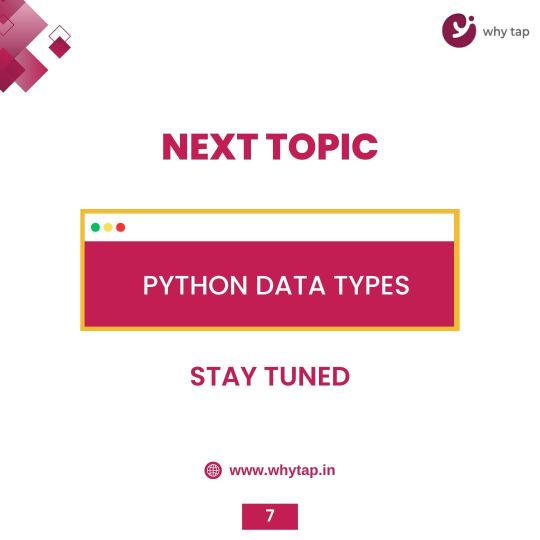
WHY tap
#placement#training#python developers#python tutorial#python#python data science course#python online course#python web development#programmer
4 notes
·
View notes
Text
Learn and enjoy!
youtube
Welcome to the "Interactive Free Python Lab" – your gateway to mastering Python programming! This free, comprehensive course is designed to take you from a complete beginner to an intermediate coder through interactive, hands-on learning. Our curriculum is organized into 21 structured sections covering everything from basic Python syntax to advanced topics like data science, machine learning, and artificial intelligence.
With over 400 practical examples accompanied by detailed explanations and exercises, you’ll learn to tackle real coding challenges and gain the confidence to create your own projects.
Embark on your coding journey today with Interactive Free Python Lab. Subscribe, learn, and join a vibrant community of aspiring developers and data enthusiasts who are transforming their futures through the power of Python. Your path to Python mastery starts here!
#python#coding#coder#python code#code#programming#python programming#coursera#data analytics#data science#education#online learning#python tutorial#learn python#python for beginners#data types#python basics#python learning#machine learning#artificial intelligence#free python course#Youtube
0 notes
Text
youtube
Build 5 Real World Python Projects With 3 Senior Developers
These 5 real-world Python projects (from 3 of our TOP courses) are guaranteed to take your skills to the next level!
Instead of just learning syntax, you’ll apply Python in real-world scenarios—from automation to data analysis and even security-focused projects. These are the kinds of projects that help you stand out to employers and solidify your skills beyond the basics.
You’re not just learning from any instructor—you’ll be guided by 3 industry experts: Andrei Neagoie, Travis Cuzick, and Diogo Resende, all senior developers who have helped 1,000s of students land jobs in tech.
#python classes#free education#education#educate yourselves#educate yourself#python tutorial#python programming#python training#python for data science#python course#coding#developers#data science#machine learning#python projects#learn python#python#technology#youtube#Youtube
0 notes
Text
SAS vs. R vs. Python: Which Tool is Best for Data Analysis and Visualization?
What is SAS Programming?
SAS (Statistical Analysis System) is a software suite used for advanced analytics, business intelligence, data management, and predictive analytics. It’s widely used in industries like healthcare, finance, and government, particularly for data analysis that requires a high level of precision and regulatory compliance.
SAS programming is especially popular for:
Data manipulation and cleaning,
Statistical analysis and reporting,
Predictive modeling,
Business intelligence and visualization.
SAS programming has a long history, making it one of the most trusted tools for enterprises handling large datasets. Its ability to handle complex analyses and integration with databases makes it a solid choice for corporate environments.
If you're new to SAS, enrolling in a SAS online training course can be a great way to get started. These courses will help you understand the fundamental concepts and give you practical skills to effectively use SAS for your data science projects.
What is R?
R is an open-source programming language specifically designed for statistical computing and data visualization. It has a large and active community that continually contributes to its vast library of packages. R is widely used in academic research, statistics, and data science.
R is a strong choice for:
Statistical analysis (advanced statistical tests, hypothesis testing, etc.),
Data visualization (with libraries like ggplot2),
Machine learning (through packages like caret, randomForest, and xgboost).
One of R's biggest strengths is its ability to generate stunning data visualizations, making it ideal for projects where presenting data insights visually is important. Additionally, R is favored for its statistical analysis capabilities, especially when you need to perform complex statistical models or tests.
For those just starting out with R, following a R programming tutorial or taking a structured course can help you get comfortable with its syntax and functions.
What is Python?
Python is one of the most popular general-purpose programming languages used across multiple fields, including data science, web development, artificial intelligence, and more. Its versatility and simplicity have made it a favorite among data scientists and developers alike.
Python is widely used for:
Data analysis (with libraries like Pandas and NumPy),
Machine learning and deep learning (with frameworks like TensorFlow, scikit-learn, and PyTorch),
Data visualization (using libraries like Matplotlib and Seaborn).
Python’s syntax is straightforward and easy to understand, making it a great option for beginners. It's also highly extensible, meaning you can integrate it with other languages and tools, making it perfect for a wide variety of tasks. Moreover, Python's rich ecosystem of libraries for machine learning, data manipulation, and visualization make it a top choice for data science projects that involve predictive modeling, automation, and AI.
SAS vs R vs Python: Key Differences
Now that we’ve briefly covered what each tool is good at, let’s dive deeper into how SAS programming, R, and Python compare when it comes to their suitability for data science projects:
1. Ease of Use
SAS: SAS has a steeper learning curve, especially if you're new to programming. However, its comprehensive documentation and user support make it a solid choice for those who need to quickly learn the basics. If you want to get up to speed fast, you can consider taking a SAS online training course, which provides structured guidance and real-world examples.
R: R has a more complicated syntax than Python but is tailored for statisticians, making it ideal for data analysis and complex mathematical tasks. Learning R can be a challenge at first, but many R programming tutorials provide helpful examples to guide beginners.
Python: Python is known for its simplicity and readability. It has a very straightforward syntax that is easy to learn, making it ideal for beginners. It also has a vast community, so you can easily find resources and tutorials to get started.
2. Data Handling and Performance
SAS: SAS excels in handling large datasets, especially when working in enterprise environments. It is optimized for performance in complex data management tasks and can process massive amounts of data without crashing. This makes it a go-to for industries like finance and healthcare, where data accuracy and performance are crucial.
R: R is very efficient for statistical analysis, but it can struggle with very large datasets due to its memory limitations. For smaller to medium-sized datasets, R is great. However, if you're dealing with very large data sets, R can become slow, unless you use specific packages like data.table.
Python: Python, with libraries like Pandas and NumPy, is excellent for handling datasets of varying sizes. It performs well with medium to large datasets and offers a variety of tools to scale up for big data through integration with distributed computing systems like Hadoop and Spark.
3. Statistical Analysis
SAS: SAS is known for its powerful statistical analysis capabilities, including regression analysis, ANOVA, time-series analysis, and more. It is trusted for high-quality, validated results, making it a great choice for sectors like healthcare, where accuracy is essential.
R: R is an excellent choice for performing complex statistical analysis. It has a wider array of built-in statistical tests and models than SAS or Python. With extensive libraries for statistical analysis, R is often the go-to language for statisticians and data scientists focused on research.
Python: Python offers good statistical analysis capabilities through libraries like SciPy and StatsModels, but it's not as extensive as R when it comes to statistical modeling. However, Python’s real strength lies in its machine learning capabilities, which have grown rapidly thanks to libraries like scikit-learn.
4. Machine Learning and AI
SAS: While SAS is excellent for traditional statistical analysis, it is not as flexible as Python when it comes to machine learning and AI. However, SAS does have tools for machine learning and is frequently used for predictive modeling and analytics in enterprise environments.
R: R is not as commonly used for machine learning as Python, but it still offers strong libraries for building machine learning models, like caret, randomForest, and xgboost. It’s more widely used in academic and research settings for statistical modeling and analysis.
Python: Python is by far the most popular language for machine learning and AI. With frameworks like TensorFlow, Keras, scikit-learn, and PyTorch, Python allows you to build complex models for deep learning, machine learning, and artificial intelligence. If your data science project involves these areas, Python is the clear winner.
5. Data Visualization
SAS: SAS offers built-in tools for data visualization like SAS Visual Analytics and PROC SGPLOT, which are powerful in a business setting. However, they are less flexible than the visualization tools offered by R and Python.
R: R is a data visualization powerhouse. With libraries like ggplot2 and plotly, R can generate stunning, customizable plots and charts. If your project requires intricate and detailed visualizations, R is a top choice.
Python: Python has excellent visualization libraries like Matplotlib, Seaborn, and Plotly. These libraries are easy to use, and Python’s flexible syntax allows you to create a wide range of visualizations, making it a great choice for data scientists who need to quickly explore and present data.
Conclusion: Which Tool Should You Choose?
When deciding between SAS programming, R, and Python, the best tool depends on your specific needs:
Choose SAS if you're working in an enterprise environment where data handling, performance, and regulatory compliance are crucial. SAS online training or a SAS programming full course can help you gain expertise in these areas.
Choose R if your project focuses heavily on statistical analysis and data visualization, especially if you’re in academic research or healthcare.
Choose Python if you want an all-around tool for data science, with strong support for machine learning, AI, and general data manipulation. Python is the go-to tool for data scientists looking to explore, analyze, and visualize data at scale.
For beginners, starting with a SAS programming tutorial or enrolling in a SAS online training course can help you quickly grasp the basics of SAS programming. Whether you choose SAS, R, or Python, mastering one of these tools will set you on the path to success in your data science career.
#sas programming course#sas tutorial#sas online training#sas programming#sas programming full course#python#r programming
0 notes
Text
IT and Non IT Training in Nepal
If you are ready to build your career in IT and Non-IT training, enroll in any of various training in Nepal!
According to my research, I found best HR training provided by UpSkills Nepal with many different IT and Non It courses!
Most Of top Non IT courses are:
Digital marketing training in Nepal
HR training in Nepal
SEO training in Nepal
Accounting training in Nepal
Graphics design training in Nepal
Diploma in digital marketing in Nepal
Most important IT courses are:
Cybersecurity courses in Nepal
Data science traning in Nepal
AI training in Nepal
DevOps training in Nepal
Python traning in Nepal
UI/UX training in Nepal
#professional hr training#hr training#digital marketing company#digital marketing#digital marketing training#seo training#seo marketing#diploma courses#devops#devops training#cybersecurity#cybersecurity training#data science training#ui ux design#python course#python tutorial#accounting tips
0 notes
Text

#best online python courses and programs#python courses and tutorials#best python training institute in nagpur#python course and certification online#online marketing courses with certificates
0 notes
Text
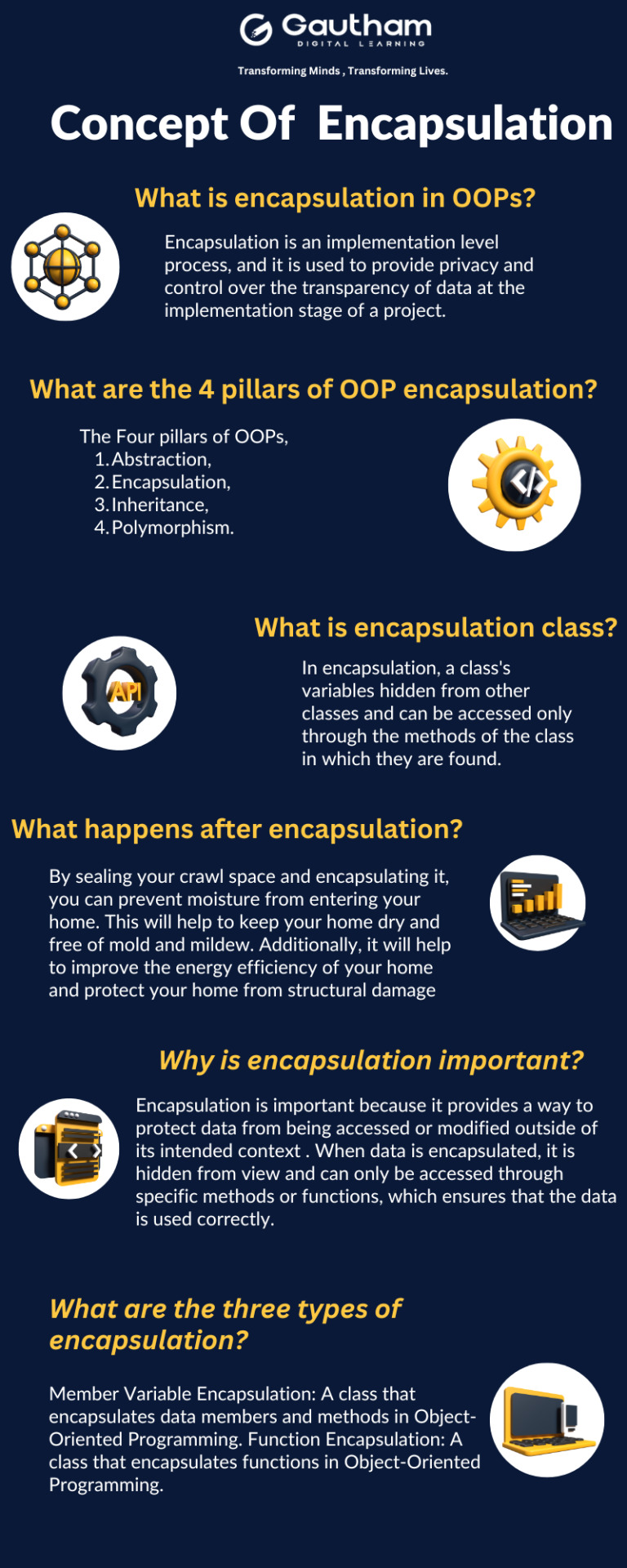
Are you looking to embark on a journey into the dynamic world of full-stack development with Python? Look no further! Gautham Digital Learning offers comprehensive Python full-stack training in Hyderabad.
BEST PYTHON TRINING IN HYDERABAD
#python course#python language tutorial#python language course#python programming#python full stack course#python training#reading
0 notes
Text
SQL With POWER BI

#business#college#education#student#technology#sql course#sqlserver#peter sqloint#python#software engineering#python tutorial#pythontips
0 notes
Text
PYTHON - Code With Josh ...
youtube
Post #163: YouTube, Free Python course for beginner, Code with Josh, 2025.
#programming#education#coding#i love coding#coding is fun#learning#i love programming#i love python#programming language#teaching#learn python#educacion#python online course#python coding#python tutorial#Youtube
3 notes
·
View notes
Text
Python Tuples
Tuples in Python are immutable sequences, similar to lists, but with the key distinction that once created, they cannot be modified. This immutability provides certain advantages, such as being used as keys in dictionaries or elements in sets, as well as ensuring data integrity in situations where the contents should not change. Here’s a basic overview of tuples in Python: 1.Creating…
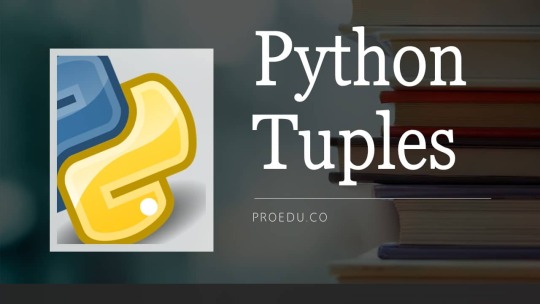
View On WordPress
0 notes
Text
0 notes
Text
Built-in Functions for Strings in Python!
youtube
In this video, you'll discover the basic information you need to know about built-in functions for strings in Python! Whether you're a beginner or an intermediate coder, mastering these functions is essential for efficient text processing. We’ll cover key string functions, their applications, and how to use them to manipulate and analyze text data effectively. ✅ Subscribe to our channel so you don't miss more lessons on Python and programming!
#python#coding#coder#python code#code#programming#python programming#coursera#data analytics#data science#education#online learning#python tutorial#learn python#python for beginners#data types#python basics#python learning#machine learning#artificial intelligence#free python course#Youtube
0 notes